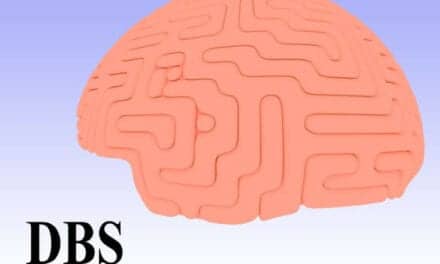A subset of neurons in the brain’s subthalamic nucleus may be a potential target for pain relief in Parkinson’s disease (PD), as well as other diseases such as dementia, motor neuron disease and Huntington’s, and certain forms of migraine, researchers suggest.
The study, published recently in the journal eLife, reveals a novel pain-sensing network that links the subthalamic nucleus region of the brain to abnormal pain processing in a rat model of Parkinson’s disease.
Deep brain stimulation in the subthalamic nucleus can help with the movement-related symptoms of PD, but it may also reduce pain. The way it does this, however, is currently unclear, according to a media release from eLife.
In the study, the researchers used electrophysiology to measure the firing of electrical signals in nerve cells in the subthalamic nucleus of rats given a shock to their back paw.
Nerve cells were indeed temporally activated by this stimulation. They also found that the neurons fell into three response groups, showing an increase, decrease or no change in their baseline firing rate.
They next looked at whether these responses caused a change in brain function. Rats with a damaged subthalamic nucleus took much longer to show signs of discomfort than healthy rats.
When they expanded their study to rat models of PD, the team found that nerve cells in the subthalamic nucleus had higher firing rates and the responses to pain were bigger and longer than in the healthy animals. Taken together, this suggests that dysfunctional pain-processing pathways in the subthalamic nucleus are the cause of PD-related pain, the release explains.
To understand where the pain signals to the subthalamic nucleus were coming from, the team looked at two brain structures known to be important in relaying damage signals from the spinal cord: the superior colliculus and the parabrachial nucleus. Blocking their activity revealed that both structures play a crucial role in transmitting pain information to the subthalamic nucleus, and that a direct communication pathway exists between the parabrachial nucleus and the subthalamic nucleus.
As a result, the team believes this pathway is likely to be involved in the beneficial effects of deep brain stimulation on pain in PD, and that these novel insights could help to target stimulation to specific parts of the brain to make it more effective as a pain reliever, the release continues.
“We have found evidence that the subthalamic nucleus is functionally linked to a pain-processing network and that these responses are affected in Parkinsonism,” concludes senior author and Inserm researcher Veronique Coizet, PhD, in the release.
“Further experiments are now needed to fully characterize the effects deep brain stimulation on this brain region in our experimental models, with a view to finding ways to optimize it as a treatment for pain caused by Parkinson’s and other neurological diseases.”
[Source(s): eLife, Science Daily]





